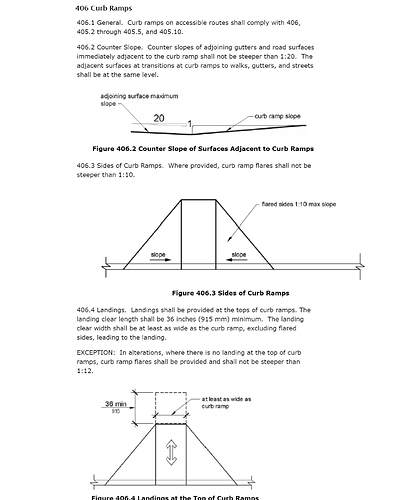QUESTION
A common situation in site and roadway design for new construction is the standard 6" vertical curb with a 2% cross-sloped sidewalk above, and an ADA-compliant pedestrian ramp is needed to transition from street/gutter level up to the sidewalk. Per the ADA guidance, any total rise in a ramp over 6" requires handrails:
2010 ADA: 405.8 Handrails. Ramp runs with a rise greater than 6 inches (150mm) shall have handrails complying with 505.
However, with a 6" curb and ANY slope (greater than zero) to the sidewalk above, the ramp would by definition exceed the 6" rise limit. Often these are constructed at 6’ length because they are quickly calc’d at 1:12 longitudinal slope just for the height of the curb, ignoring the additional rise to catch the surface above. E.g. typical 0.50’ curb + 0.02*6’ramp = 0.62’ > 0.50’ max rise (and in truth violates the 1:12 max longitudinal slope, the ramp should be almost 8’ to catch a 2% sidewalk at 1:12 max). So how do jurisdictions justify omitting the handrail in curb ramps?
REPLIES
Spartan5
There is a specific section on Curb Ramps (406) which states which portion of Ramps (405) apply. 405.8 does not apply to Curb Ramps:
https://www.access-board.gov/guidelines-and-standa…
SOURCE
https://www.eng-tips.com/viewthread.cfm?qid=413880
Above is a snippet.
